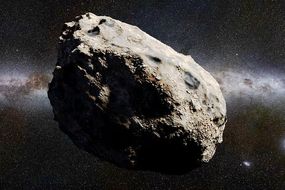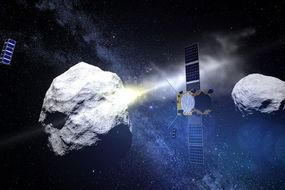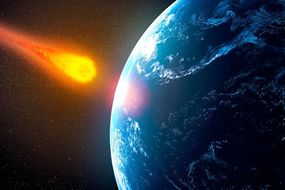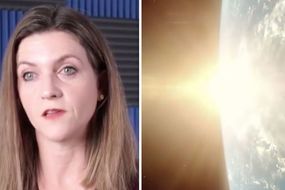Asteroid apocalypse: hurtling rock came within ‘astronomical’ inches of human extinction – Express.co.uk
The near-miss came when a space rock hurtled just 0.19 lunar distances of the Earth – just inches in astronomical terms. NASA eventually detected the asteroid but only after it was revealed to be on a near-direct for the planet, which could have resulted in mass extinction.
The asteroid, called “2019 OK”, was reported to be the size of a football field, coming within an estimated 48,000 miles of Earth.
NASA were only notified 24 hours in advance of the asteroids arrival.
The space agency paid its thanks to a small telescope in Brazil that managed to detect the partially invisible asteroid.
The near-miss reignited talks and speculation surrounding NASA’s apparent need of new and improve telescopes to keep up with the burgeoning threat of space rocks.
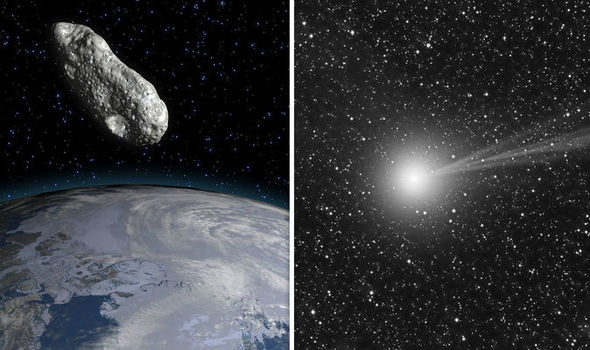
The asteroid came within ‘astronomical’ inches of the Earth (Image: GETTY)
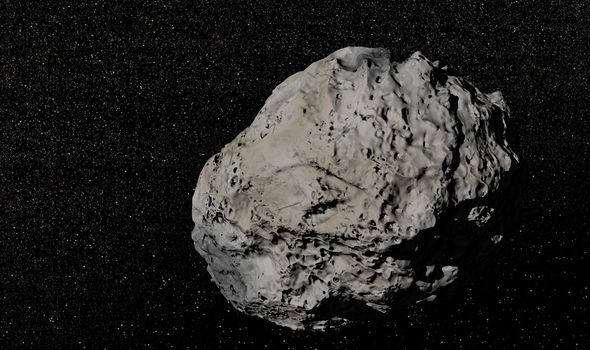
The asteroid was believed to be the size of a football field (Image: GETTY)
Earlier this week it was reported that the US space agency was thinking of constructing a state of the art infrared telescope to tackle the problem of “invisible” asteroids.
The new defence system could be functional in the next 10 years, according to , NASA’s associate administrator for science.
Known as the Near-Earth Object Surveillance Mission, it will cost $500million (£402million) to $600million (£482million) to construct, along with specifically calibrations and engineering logistics.
The telescope, however, is not that new of an idea to NASA and its workers, having been proposed some 15 years ago.
JUST IN: Fossil of ‘largest flying animal ever’ that hunted dinosaurs found
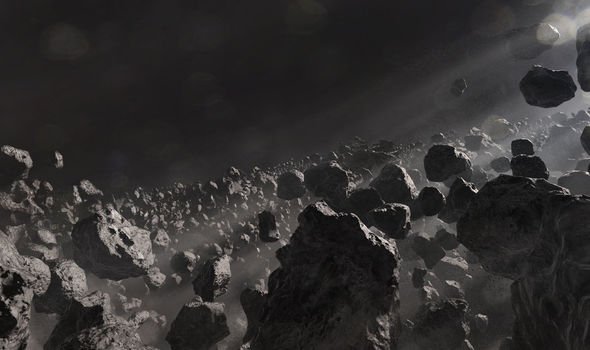
Asteroids often break away from the belt that divides Mars and Jupiter (Image: GETTY)
First proposed by NASA’s Jet Propulsion Lab (JPL) in Pasadena, California, such telescope is essential for meeting a congressional requirement that NASA detect 90 percent of all potentially hazardous asteroids and comets of at least 140 meters in diameter by the end of 2020.
Though the telescope will inevitably end up with a different name given the length of time it will take to construct, Mark Sykes, CEO of the Planetary Science Institute in Tucson, Arizona explained that the mission will always stay the same.
He said: “There is no independent or new spacecraft or operational design here. This mission is NEOCam.”
However, because NASA estimate the telescope’s construction to be in the next 10 years, the agency will thus not meet congresses requirement by 2020.
DON’T MISS
Asteroid alert: NASA tracks three large rocks approaching Earth
Asteroid warning: NASA and ESA confirm need to team up
Major asteroid collision could be the key to preventing climate change
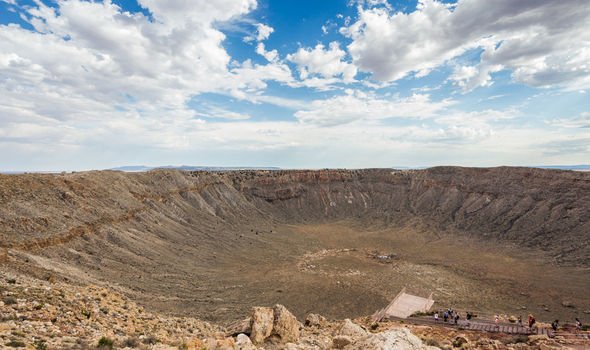
Previous asteroids strikes paint a picture of a different time (Image: GETTY)

The Acraman crater in South Australia from an asteroid strike 590 million years ago (Image: GETTY)
But, the combination of the prospect of an infrared telescope combined with the Large Synoptic Survey Telescope, a ground-based facility being built in Chile, will eventually ramp-up Earths asteroid defences and turn the current goals into reality.
And, the mission is unlikely to be abandoned or backlogged, as an infrared telescoper researchers say, is essential because of the past decades having shown that dark asteroids – nearly invisible to light – stand out in infrared and are more abundant than once thought.
Jay Melosh, a planetary scientist at Purdue University, claimed: “There are a lot of really dark asteroids out there and that pushes the need for the infrared system.”
The telescope could demand an increase in NASAs current $150million (£120million) annual budget for planetary defence systems.
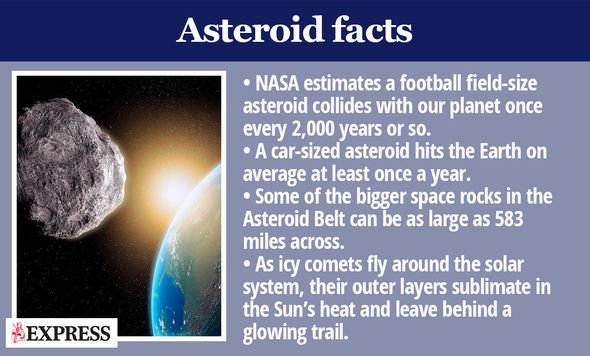
NASA prevents multiple asteroids from hitting Earth each year (Image: Express Newspapers)
Most of the money goes to the Double Asteroid Redirection Test (DART) mission being built by Johns Hopkins University’s Applied Physics Laboratory.
Set for completion by 2021, DART seeks to test the possibility of deflecting the path of an asteroid as oppose to destroying it.
It is unclear whether the US congress appropriators will follow NASA’s lead – neither is it clear if the US congress will approve funding for the infrared telescope.
Though funding is a big question in the advancement of the agency’s defence systems, the mission does mark a developmental step towards NASA taking an external groups proposal and adapting it for its internal work.
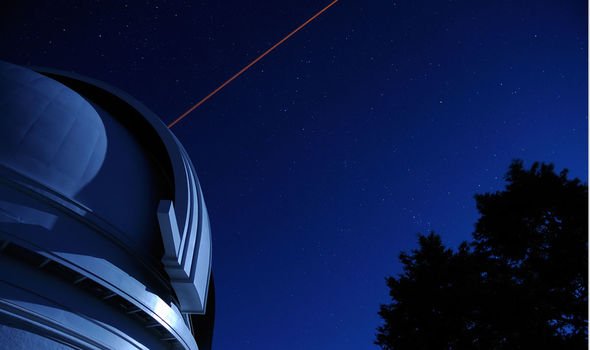
Infrared telescopes can detect asteroids invisible to the naked eye (Image: GETTY)
The proposal could see Amy Mainzer, an astronomer at the University of Arizona, return.
Ms Mainzer has been crucial to the progress of infrared technologies within astronomy, and led NEOCam since it was first proposed.
She told Science Mag: “I’m hearing the news at the same time as everyone else.
“It sounds like NASA is interested in pursuing this, which I think is great – it’s a problem worth solving.”
